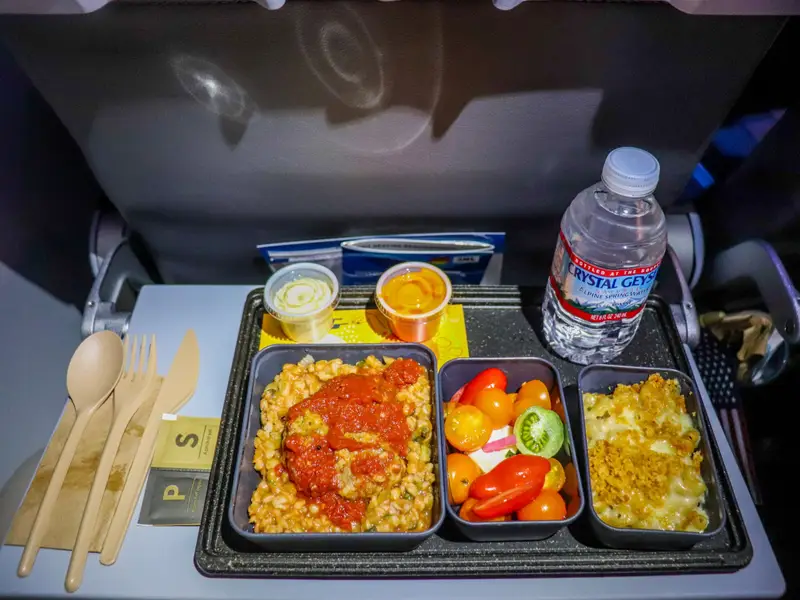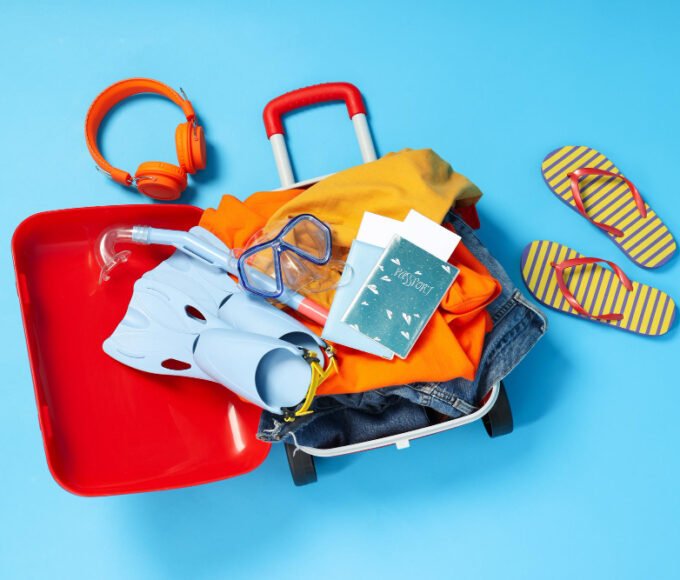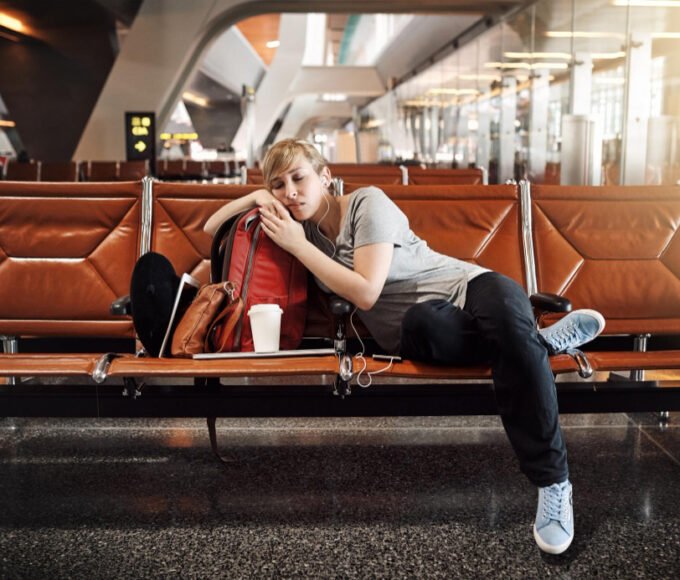If you fly often, you know the feeling. You’re on the plane and you’re committed to the next several hours in a metal tube. Your main thought—or at least, mine—isn’t about turbulence or landing times.
It’s basically: Will they feed me, and when is it coming?
For anyone who gets a little moody when they’re hungry, it’s really important to know. You need to know if you should eat a full meal at the airport or save room for whatever the airline is going to be serving.
The good news is that finding out if a meal is served is usually simple. The catch? Pinpointing the exact minute those service carts will rattle down the aisle is tricky.
Let’s unpack the topic of plane food a bit, covering the “if,” the “what,” and the hard-to-predict “when.”
Part 1: The Basics—Am I Eating? (The “If”)
The industry follows a few reliable rules that offer your first clues about food service.
1. Flight Length is Key
How long you’re flying is the biggest hint about whether you’ll get a meal.
- Short-Haul (Under 2.5 hours): Don’t count on it. Unless you’re in a premium cabin, you’re likely getting a small bag of pretzels and a drink, if anything. Most budget carriers and even major airlines offer only “buy-on-board” options here.
- Medium-Haul (3 to 5 hours): This is the gray zone. On popular trans-continental routes (like New York to Los Angeles), you might get a complimentary snack box or light meal. On other routes, expect to buy your food.
- Long-Haul International (6+ hours): Yes, you are almost certainly getting fed. All full-service international carriers give you at least one, and usually two, full complimentary meals (plus snacks) on any flight this long. If the flight is over eight or ten hours, plan on a main meal after takeoff and a second “pre-arrival” meal before landing.
2. The Time of Day Matters
A three-hour flight’s service changes a lot based on when you leave. Airlines usually serve something more substantial during typical meal times.
- Breakfast Flights (Takeoff 5:00 AM – 9:00 AM): Even on shorter runs, you might get a light breakfast item like a muffin or a yogurt cup.
- Lunch/Dinner Flights (Midday and Evening takeoffs): These flights are the most likely to have a complimentary meal service, especially on cross-country trips.
- Red-Eye Flights: Service is inconsistent. Some airlines offer a quick dinner after takeoff then dim the lights for sleep, serving a light breakfast 90 minutes before landing. Others skip the first service and only offer a continental breakfast near the end.
How to Check the “If”
- Your Booking Confirmation: Look for text mentioning “Complimentary Meal Included,” “Snack Service,” or “Buy-on-Board Available.”
- The Airline’s Website or App: Check the flight details section. Many airlines now post their basic menus online.
- Recent Traveler Reports: Forums and travel sites sometimes share current information on what service to expect for a specific route.
Part 2: The Core Question—When Will I Eat? (The “When”)
You know there’s a meal. Great! The real puzzle is figuring out the best time to eat that airport snack. You don’t want to be starving now, but you don’t want to be stuffed when the main event arrives.
There’s no single, fixed rule for meal timing. It’s influenced by logistics, aviation rules, and the crew’s plan. Here are the best ways to estimate.
1. The Initial Service Window (The 1-Hour Mark)
For shorter international flights (4–6 hours) or the first major meal on a long-haul route, the time is fairly predictable:
Service usually starts 45 to 90 minutes after takeoff.
- The Reason: The crew spends 15–20 minutes after takeoff on safety checks. Then they need time to heat up the food and prep the carts. The goal is to start serving once the plane is stable at cruising altitude and the seatbelt sign has been off for a bit.
2. The Logistics Delay (Waiting in the Back)
“Service starts” and “food is on your tray” are different, especially in Economy on a big plane.
- The Widebody Effect: On a massive jet, the whole meal service can take over an hour to finish. The crew typically starts at the front and moves back. If you are sitting in the back half of a large aircraft, add 30 to 45 minutes to the service start time before your row is served.
- Drinks First: On most airlines, the crew will pass through with the drink cart first. Your meal will follow soon after, sometimes with the drink cart, but often not.
3. The Pre-Arrival Service (The 2-Hour Mark)
On flights over six hours, you get a second meal (breakfast, lunch, or dinner, depending on arrival time).
The final meal service typically starts 1.5 to 2 hours before landing.
- The Reason: This timeframe allows the crew to complete the entire service—serving, clearing all trays, and stowing equipment—before the plane begins its final descent, which often starts about 30–45 minutes from the airport.
4. The Unpredictable Factors: Weather and Time
These will mess up any schedule:
- Turbulence: If the pilot announces moderate turbulence, the meal service will stop instantly. Carts are locked down, and the crew must sit. Once the air smooths out, service restarts, but you could lose 30 to 60 minutes.
- Time Zone Strategy: Many international airlines time their main meal to align with a local mealtime at the destination. If you leave New York at 10 PM for London, they might skip dinner entirely, get you to sleep fast, and serve a large breakfast a couple of hours before arrival, timed for a mid-morning London meal.
Part 3: Strategy for the Hangry Traveler
The fear of getting hungry while waiting and then being too full when the meal arrives is common. Here are the best methods for navigating the gap:
1. Pack Your Own Backup Snacks
This is the top rule for flying. Do not rely only on the airline. Put stable, easy-to-eat snacks in your carry-on—protein bars, trail mix, or a small sandwich.
- A Solid Tip: Pack enough food for a six-hour delay. This solves the hunger issue and is a lifesaver if a last-minute flight change cuts the meal service.
2. Pre-Order a Special Meal (The Line-Jump)
If you have dietary needs (vegetarian, kosher, gluten-free, etc.), pre-ordering a “Special Meal” is a smart move. The cabin crew must deliver all special meals first to make sure you receive the right tray.
- The Payoff: If you order one, you will almost certainly be served in the first 15–20 minutes of the service period, well ahead of the general cabin.
3. Watch the Crew for Clues
The flight attendants offer the best information on timing.
- Cabin Prep: If you see the crew come out of the galley, put on their service aprons, and start moving the service carts, the meal is about to begin.
- The Galley Light: The “kitchen” area lights often brighten before service prep starts. That’s your 15–30 minute notice.
- The Announcements: Listen for the crew’s opening remarks. They often give a general time: “We plan to begin our dinner service in roughly 45 minutes after we reach our cruising altitude.”
4. Observe Premium Class
If you walk past First or Business Class, take note. Premium cabins are nearly always served first with a more involved service.
- Your Time Window: If you see the crew delivering trays to First Class passengers, the Economy service will usually start 30 to 45 minutes later. This gives you a clear moment to decide whether to have that quick protein bar or hold out.
A Final Thought
Flying can feel like a patience test, especially when hunger is involved. Finding out the “if” of meal service is simple, but the exact “when” will always be a variable—a mix of time zones, cabin size, and weather.
The most prepared flyer plans for the worst and hopes for the best. Bring your own snacks, pay attention to the crew, and consider a special meal order if you want to eat sooner.
With this plan, you can relax, enjoy the flight, and leave that impending hunger behind.











